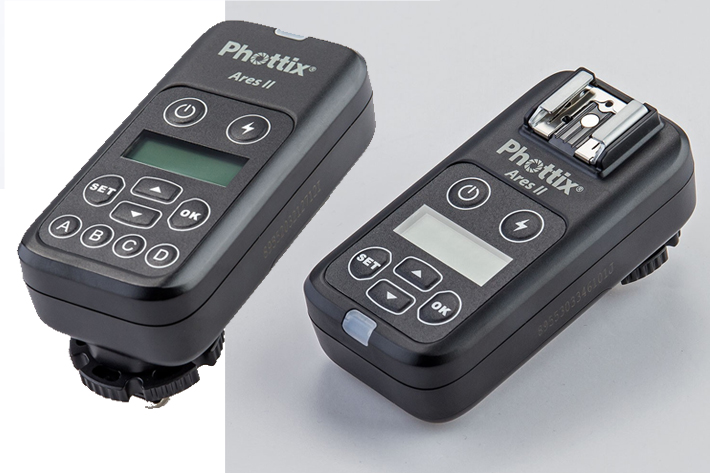
With 16 channels, 4 groups and a range of 150 meters, the Phottix Ares II Flash Trigger takes the promise of the original Ares to a whole new level.
When Phottix launched the original Ares, in 2012, the flash trigger solution was a standalone product within the Phottix ecosystem. Presented as an affordable solution, to use off-camera flash, the Ares transmitter and receiver units were popular and lauded by some of the biggest names in the industry for its design and reliability.
The original Ares had its limitations. With only 8-channel, the transmitter and receiver units, albeit offering a range of 200 meters, had a “fire-all” channel function, meaning all flashes connected to the units would fire at once. The Ares II, introduced now, reduces the working distance, at least on paper, but offers a more dynamic approach.
One important aspect is that the Ares II is no longer a standalone solution but part of the Phottix ecosystem, meaning it works with other Phottix products. That’s an important aspect if you start with the Ares II and want to expand your system to newer and more sophisticated solutions.
One such example is the connection to the Strato II family of triggers, which is one of the most popular within the Phottix brand. The Ares II first four channels are compatible with the Phottix Strato II Receiver. Furthermore, the Ares II can be used to trigger products as the Mitros+ and Indra series of studio lights with built-in Strato II receivers. With 16 channels and Digital ID, the Ares II allows users full control of their lights. Use the Digital ID function for the ultimate in secure triggering – no one can trigger your flashes unless using your four-digit Digital ID code.
The Ares II transmitters and receivers have been designed to be compatible with most major camera and flash systems (including Sony). The Ares II is, according to Phottix, at home on Canon, Nikon, Sony (MIS), Pentax, Panasonic, Fuji and Olympus cameras and compatible with most hot shoe flashes (triggering from the X-Sync pin).
Both units offers LCD display for control of functions, a maximum sync speed of 1/250, and are powered by 2 AA batteries. Price wise, the new Ares II reflects the new and more ambitious specifications. While the original Ares, which is still available, costs $62.00 for the transmitter and receiver pair, the new Ares II will cost you $54.95 for the receiver and the same price for the transmitter.
